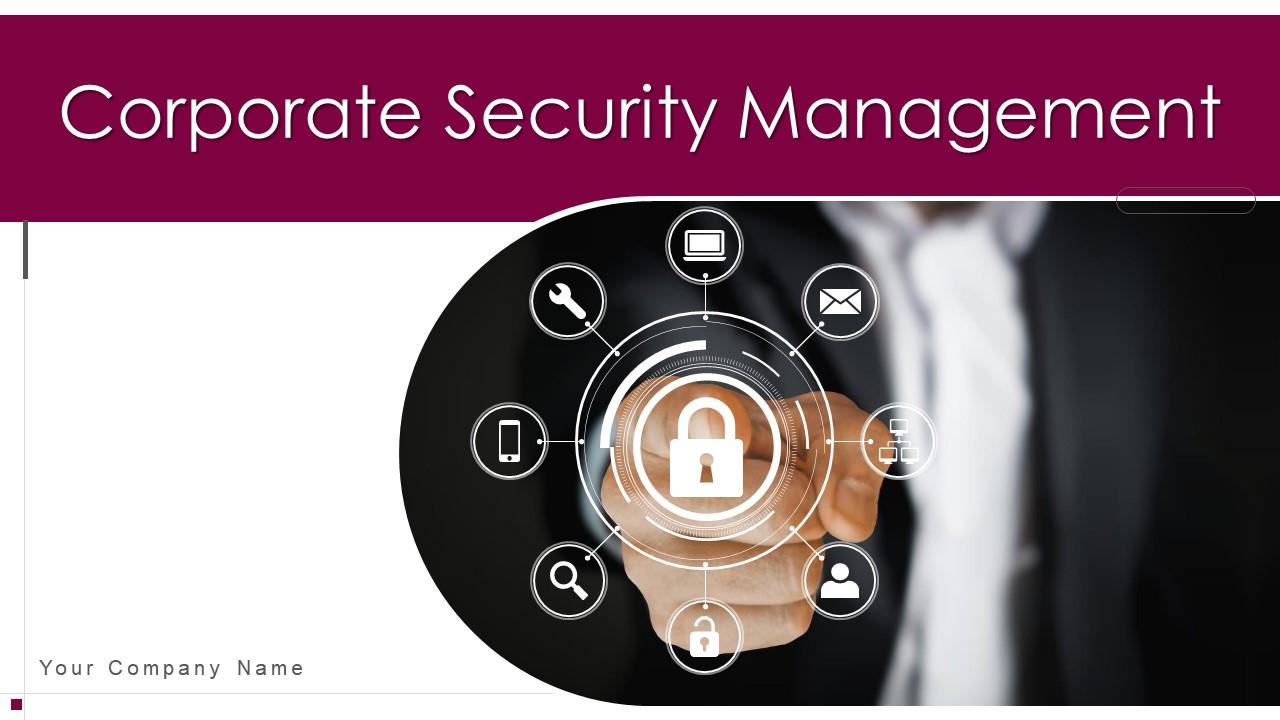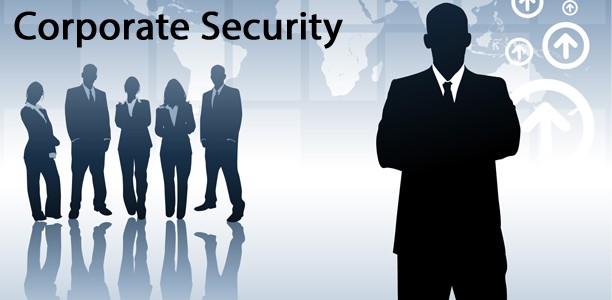Corporate Security Demystified: Strengthening Your Company Defenses
Corporate Security Demystified: Strengthening Your Company Defenses
Blog Article
From Cybersecurity to Physical Measures: Reinforcing Company Safety And Security in a Transforming World
In today's swiftly progressing electronic landscape, the significance of company security can not be overstated. As cyber dangers end up being widespread and progressively sophisticated, organizations need to exceed traditional cybersecurity actions to protect their procedures and assets - corporate security. This is where the assimilation of physical safety actions ends up being vital. By incorporating the staminas of both cybersecurity and physical safety and security, business can produce an extensive defense strategy that deals with the diverse variety of dangers they encounter. In this discussion, we will discover the changing threat landscape, the requirement to integrate cybersecurity and physical security, the implementation of multi-factor authentication steps, the importance of employee awareness and training, and the adaptation of protection steps for remote labor forces. By checking out these key areas, we will acquire useful insights into just how organizations can strengthen their corporate safety and security in an ever-changing globe.
Understanding the Transforming Risk Landscape
The progressing nature of the modern world requires an extensive understanding of the transforming threat landscape for efficient company safety. It is crucial for organizations to remain educated and adapt their protection gauges to deal with these evolving dangers.
One secret element of recognizing the changing risk landscape is identifying the various kinds of threats that companies deal with. Furthermore, physical hazards such as burglary, vandalism, and business reconnaissance remain prevalent problems for businesses.
Surveillance and examining the risk landscape is crucial in order to identify prospective risks and vulnerabilities. This involves staying updated on the newest cybersecurity trends, assessing threat knowledge records, and conducting normal risk assessments. By recognizing the altering danger landscape, organizations can proactively implement appropriate security steps to reduce threats and safeguard their assets, track record, and stakeholders.
Integrating Cybersecurity and Physical Security
Incorporating cybersecurity and physical protection is important for extensive company protection in today's digital and interconnected landscape. As organizations significantly depend on modern technology and interconnected systems, the limits in between physical and cyber risks are ending up being obscured. To successfully secure versus these dangers, an all natural approach that integrates both cybersecurity and physical protection actions is vital.
Cybersecurity focuses on protecting electronic properties, such as networks, systems, and information, from unapproved accessibility, disturbance, and burglary. Physical protection, on the various other hand, includes procedures to secure physical properties, people, and centers from susceptabilities and threats. By incorporating these 2 domains, organizations can deal with susceptabilities and threats from both digital and physical angles, thus enhancing their total safety and security pose.
The assimilation of these 2 techniques enables a much more thorough understanding of protection dangers and enables a unified reaction to cases. For instance, physical gain access to controls can be boosted by integrating them with cybersecurity procedures, such as two-factor verification or biometric recognition. Cybersecurity actions can be matched by physical safety steps, such as surveillance video cameras, alarm systems, and protected access points.

Executing Multi-Factor Verification Steps
As companies progressively focus on thorough safety and security steps, one efficient approach is the implementation of multi-factor verification procedures. Multi-factor verification (MFA) is a safety and security method that calls for individuals to give multiple types of recognition to access a system or application. This article source method includes an added layer of defense by combining something the individual recognizes, such as a password, with something they have, like a security or a fingerprint token.
By applying MFA, organizations can considerably improve their security position - corporate security. Standard password-based verification has its constraints, as passwords can be easily endangered or neglected. MFA minimizes these threats by including an added verification factor, making it harder for unapproved people to get to sensitive details
There are several kinds of multi-factor authentication approaches available, including biometric verification, SMS-based confirmation codes, and equipment symbols. Organizations require to examine their certain needs and choose the most suitable MFA service for their needs.
Nonetheless, the implementation of MFA should be carefully planned and executed. It is important to strike an equilibrium in between safety and functionality to avoid individual irritation and resistance. Organizations must likewise consider potential compatibility issues and offer sufficient training and support to make sure a smooth transition.
Enhancing Staff Member Awareness and Training
To reinforce company safety, companies have to prioritize enhancing staff member awareness and training. In today's quickly advancing hazard landscape, workers play an important function in securing an organization's sensitive information and properties. Unfortunately, lots of safety and security violations happen because of human error or absence of understanding. Therefore, companies need to spend in detailed training programs to educate their employees about possible risks and the best techniques for reducing them.
Efficient staff member recognition and training programs need to cover a wide variety of subjects, consisting of information defense, phishing assaults, social engineering, password hygiene, and physical safety measures. These programs must be customized to the details demands and responsibilities of various staff member roles within the organization. Regular training sessions, simulations, and workshops can assist employees establish the read what he said required abilities and knowledge to identify and respond to safety and security dangers properly.
Furthermore, companies must motivate a culture of protection recognition and give continuous updates and reminders to maintain workers informed concerning the most recent dangers and mitigation strategies. This can be done via interior communication networks, such as newsletters, intranet sites, and e-mail projects. By fostering a security-conscious labor force, companies can substantially reduce the likelihood of protection events and safeguard their valuable possessions from unauthorized gain access to or concession.

Adapting Safety And Security Actions for Remote Workforce
Adjusting business safety actions to accommodate a remote workforce is necessary in making certain the protection of delicate info and properties (corporate security). With the increasing trend of remote work, companies need to apply ideal security steps to mitigate the dangers linked with this brand-new means of functioning
One essential facet of adjusting protection actions for remote job is developing safe and secure interaction networks. Encrypted messaging systems and digital personal networks (VPNs) can aid shield delicate details and stop unapproved accessibility. Additionally, companies need to apply the usage of solid passwords and multi-factor authentication to enhance the security of remote accessibility.
Another essential consideration is the implementation of safe and secure remote accessibility options. This involves providing staff members with safe and secure accessibility to corporate sources and information with virtual desktop computer framework (VDI), remote desktop methods (RDP), or cloud-based solutions. These technologies make certain that delicate info stays protected while making it possible for workers to perform their functions efficiently.

Last but not least, extensive safety recognition training is important for remote staff members. Training sessions need to cover ideal techniques for securely accessing and managing delicate details, identifying and reporting phishing attempts, and preserving the overall cybersecurity hygiene.
Verdict
To conclude, as the risk landscape remains to evolve, it is vital for companies to reinforce their security measures both in the cyber and physical domain names. Integrating cybersecurity and physical safety and security, implementing multi-factor authentication measures, and enhancing employee awareness and training are essential steps in you can try this out the direction of attaining durable business protection. Furthermore, adapting protection procedures to suit remote labor forces is essential in today's transforming world. By executing these steps, companies can alleviate threats and secure their useful properties from possible dangers.
In this conversation, we will certainly check out the changing hazard landscape, the requirement to integrate cybersecurity and physical safety, the implementation of multi-factor verification actions, the value of employee recognition and training, and the adjustment of safety measures for remote labor forces. Cybersecurity measures can be matched by physical safety and security actions, such as monitoring cameras, alarm systems, and secure gain access to factors.
As companies progressively focus on extensive protection actions, one reliable method is the execution of multi-factor authentication procedures.In verdict, as the danger landscape continues to progress, it is essential for companies to reinforce their protection gauges both in the cyber and physical domains. Integrating cybersecurity and physical safety, implementing multi-factor authentication measures, and improving staff member recognition and training are important actions towards achieving durable company protection.
Report this page